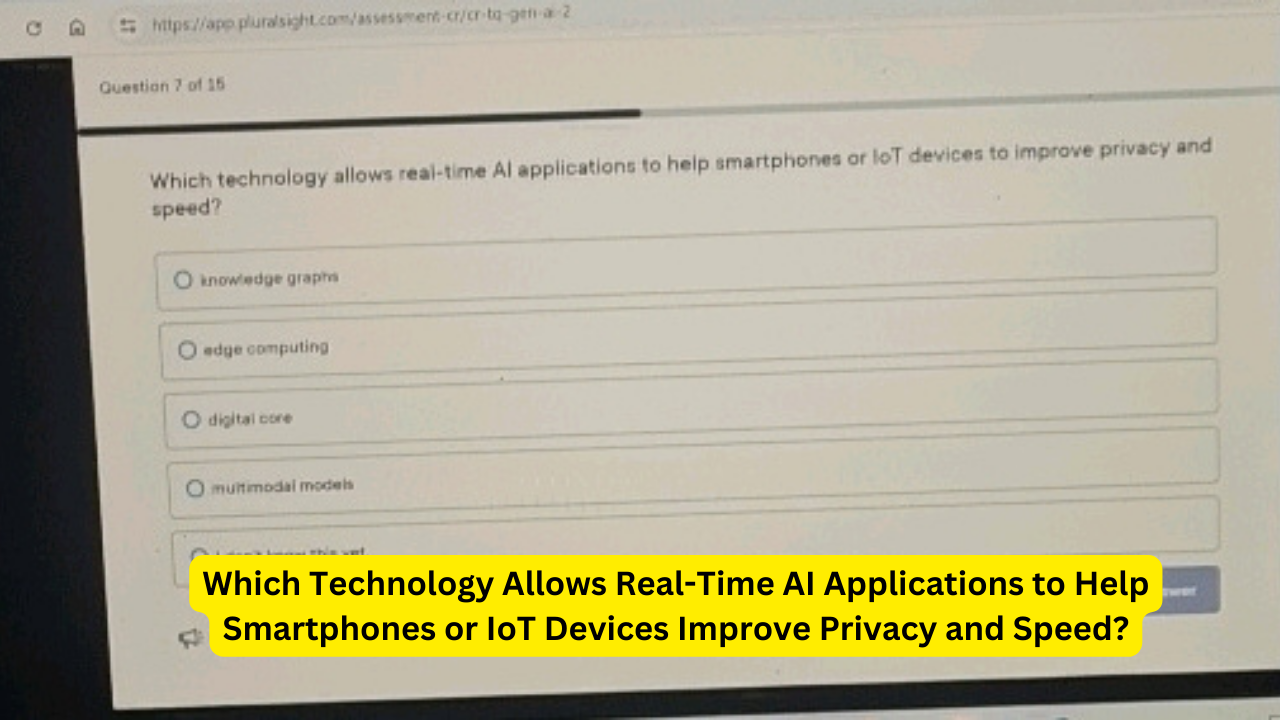In the rapidly evolving landscape of technology, edge computing has emerged as a pivotal solution for enhancing real-time AI applications. This innovative technology processes data closer to where it is generated rather than relying on centralized data centers or cloud servers. This approach significantly reduces latency, enhances privacy, and speeds up processing times, making it indispensable for real-time applications on smartphones and IoT devices.
Understanding Edge Computing
Edge computing refers to the practice of processing data at the edge of the network, near the source of the data. This is in contrast to traditional cloud computing, where data is sent to centralized data centers for processing. By handling data locally, edge computing minimizes the delay (or latency) associated with data transmission to and from remote servers.
Advantages of Edge Computing
- Reduced Latency: By processing data closer to its source, edge computing reduces the time it takes for data to travel, thus speeding up response times for real-time applications.
- Enhanced Privacy: Since data is processed locally, there is less need to transmit sensitive information over the internet, thereby enhancing privacy and security.
- Improved Reliability: Local processing reduces the dependency on a central server, which can be a single point of failure. This enhances the reliability of applications, especially in areas with intermittent internet connectivity.
Edge Computing in Smartphones
Smartphones are increasingly incorporating edge computing capabilities to improve performance and user experience. Here’s how:
Facial Recognition
One of the most notable applications is facial recognition. Instead of sending images to a remote server for processing, smartphones equipped with edge computing can perform facial recognition directly on the device. This not only speeds up the recognition process but also ensures that sensitive biometric data remains on the device, enhancing user privacy.
Voice Assistants
Voice assistants like Siri, Google Assistant, and Alexa are becoming more responsive thanks to edge computing. By processing voice commands locally, these assistants can provide quicker responses and maintain user data privacy by limiting the need to send voice recordings to remote servers.
Edge Computing in IoT Devices
The Internet of Things (IoT) encompasses a vast network of connected devices that communicate and exchange data. Edge computing plays a crucial role in enhancing the functionality of these devices.
Smart Home Devices
IoT devices in smart homes, such as smart thermostats, security cameras, and lighting systems, benefit immensely from edge computing. For instance, a smart thermostat can process temperature data locally to make real-time adjustments without needing to communicate with a remote server, thus ensuring faster and more reliable operation.
Healthcare Devices
In healthcare, IoT devices equipped with edge computing can monitor patient data in real-time and alert healthcare providers of any anomalies immediately. This rapid response is critical in emergency situations and ensures that patient data remains secure.
The Role of Machine Learning in Edge Computing
Machine learning (ML) is a key component of edge computing, enabling devices to learn from data and make intelligent decisions locally. Here’s how ML enhances edge computing:
Predictive Maintenance
In industrial IoT applications, edge computing and machine learning work together to predict equipment failures before they happen. By analyzing sensor data locally, these systems can identify patterns and predict when maintenance is needed, thus preventing costly downtime.
Smart Cities
Smart city initiatives leverage edge computing and ML to manage resources more efficiently. For example, edge-enabled cameras can analyze traffic patterns in real-time to optimize traffic light timings, reducing congestion and improving air quality.
Challenges and Future of Edge Computing
While edge computing offers numerous benefits, it also presents several challenges:
Security Concerns
Processing data locally reduces the risk of data breaches during transmission, but it also introduces new security challenges. Ensuring that local devices are secure from physical tampering and cyber-attacks is critical.
Scalability
Managing a large number of edge devices can be complex. Solutions need to be scalable to handle the increasing number of IoT devices while maintaining performance and reliability.
Interoperability
With various devices and platforms in use, ensuring interoperability between different systems is a challenge. Standardizing communication protocols and data formats is essential for seamless integration.
Conclusion
Edge computing is revolutionizing the way real-time AI applications are deployed in smartphones and IoT devices. By processing data closer to the source, edge computing enhances privacy, reduces latency, and improves the reliability of applications. As technology continues to evolve, the integration of edge computing with machine learning will further unlock the potential of real-time AI applications, driving innovation across various sectors.
For those looking to stay ahead in the ever-evolving tech landscape, understanding and implementing edge computing is crucial. This technology not only addresses current challenges but also paves the way for future advancements in AI and IoT.
